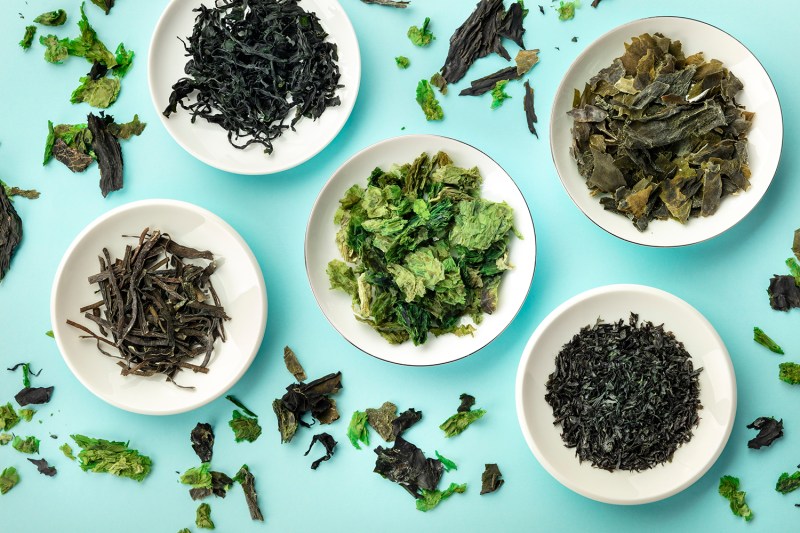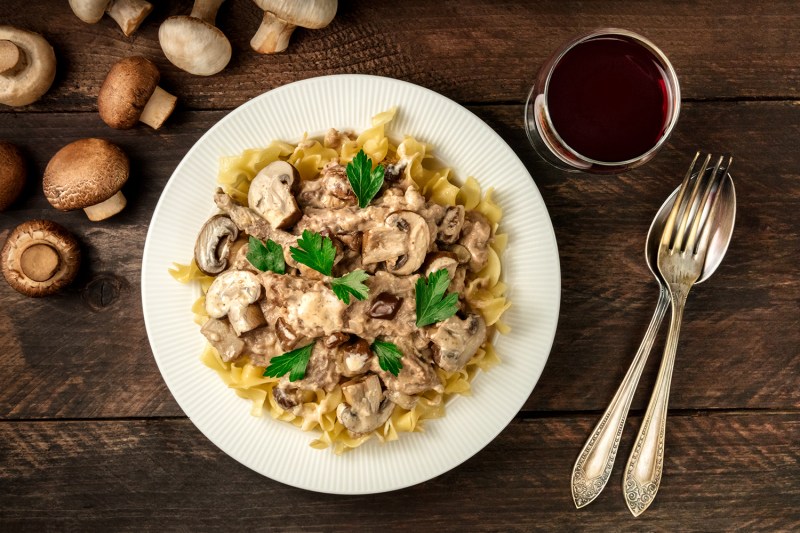Umami is delicious. Really, in Japanese, the word translates to “pleasant savory taste,” which really couldn’t describe the flavor better.
It’s more than that, of course — a fifth major taste sensation that the gastronomical world has been in love with for years now. It’s behind the rise of things like shochu cocktails, kombucha, pickled everything, and at least to some extent, the Beyond Burger craze. We’re not talking sweet, nor sour. Not bitter and not entirely salty. We’re talking about the saliva-producing savory-ness originally derived from kelp.

When I first saw umami written in the tasting notes of a particular wine, I wasn’t entirely surprised. I figured it was a new way to describe something as being savory — a more elegant, fun-to-say word that fell somewhere between earthy, meaty, and soy-like. It’s fair to say that in the early days almost a decade ago, people often used umami as a placeholder for some kind of mysterious savory flavor they couldn’t quite put their finger on.
We know a lot more about it thanks in part to the wine realm. Wine and umami flavors do well together for a variety of reasons. Red wine, especially, contains amino acids, derived from the grape skins. They form a natural bond with the same acids that make umami so unique. Additionally, whereas taste buds in certain regions pick up the other major flavors, the tongue sensors that spot umami are located all over the tongue. This means that umami, like wine, can have a palate-coating effect, yielding a broader tasting experience.
Interestingly, a lot of the strongest examples of umami are in the fermented category. It’s yet another similarity the flavor shares with wine. Items like kimchi, tempeh, sauerkraut, and plum vinegar take on natural glutamic acid as they age or are preserved.
Chef Alex Jackson of Dóttir at Portland’s KEX Hotel says he tries to sneak in umami flavor as much as possible. It comes through in house dishes like koji (Japanese fermented fungus) or a dash here and there of smoked sherry vinegar. “Umami is something of an obsession for me. I define it as a subtle flavor element. The little bit that enhances, elevates, and rounds out a dish,” he says. “We are always trying to balance a dish while simultaneously pushing the flavors to their full potential.”
How do you bring out the best of this combination? Be creative. Try subbing in a red wine where a white is typically placed — say, a Petit Syrah in place of a Chardonnay to accompany that cut of halibut or bowl of mushroom pasta. Instead of a Pinot Gris or some other dry white with seafood stew try Pinot Noir or a volcano wine like Nerello Mascalese.

Explore umami’s breadth through a cookbook or favorite restaurant or enjoys its simple delectability. Your corner store surely offers all kinds of umami-driven options, from beef jerky to cheese sticks. One of the easiest-to-grill spring vegetables — asparagus — is also rich in umami and fun to experiment on with wines. The spear-shaped green shoots have long confused critics, convinced they can’t be paired properly with wine. That’s because the thought was to always try a white. Try a lighter Tempranillo or Cab Franc with asparagus next time, especially if the veggie’s hit with a good amount of flame, and you’ll see just what umami aligns with.
There are some great wines that deliver a kick of umami on their own as well, no pairing necessary. Look out for Tannat from South America, Italian Chianti, or Burgundy. Older wines are known for offering more in the way of savory notes, especially from cooler vintages where there’s often less alcohol bigger fruit notes to mask the umami. The Rocks District of Walla Walla Valley is a hotbed for these kinds of flavors, expressed through unique Syrah, Cabernet, and more.
Even in slightly more distant realms, umami plays a role. Take Willamette Valley Pinot Noir, not known to produce the flavor by its own might but certainly up to working with it in tandem. For associate winemaker Tracy Kendall of Domaine Nicolas-Jay, it plays a factor in how the wines are made and blended and how those flavors will adapt to the dinner table, wherever that table may be.
“When I was in Japan last year with our importer, I was amazed by how well Pinot paired with Japanese,” she says. “Their food is so expertly balanced and full of umami that it completed the wine and helped to build flavor in both the wine and food. It was one of the most amazing experiences.”
The symbiosis between umami and wine is undeniable and a genuinely special thing in that it takes both elements to the next level.
Editors' Recommendations
- What is a barrique? Exploring wine’s most popular barrel size
- This is what wine tasted like in ancient Rome, and we have thoughts
- What is Wagyu beef? Origin story, how it’s graded, and more
- This is what ‘DOC’ and ‘DOCG’ mean on your wine labels
- It’s official: Gen Z is not a fan of wine (and what that means for everyone else)

